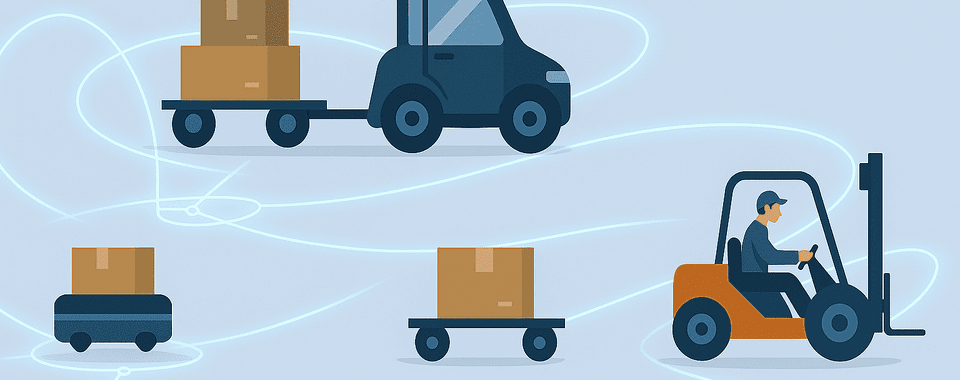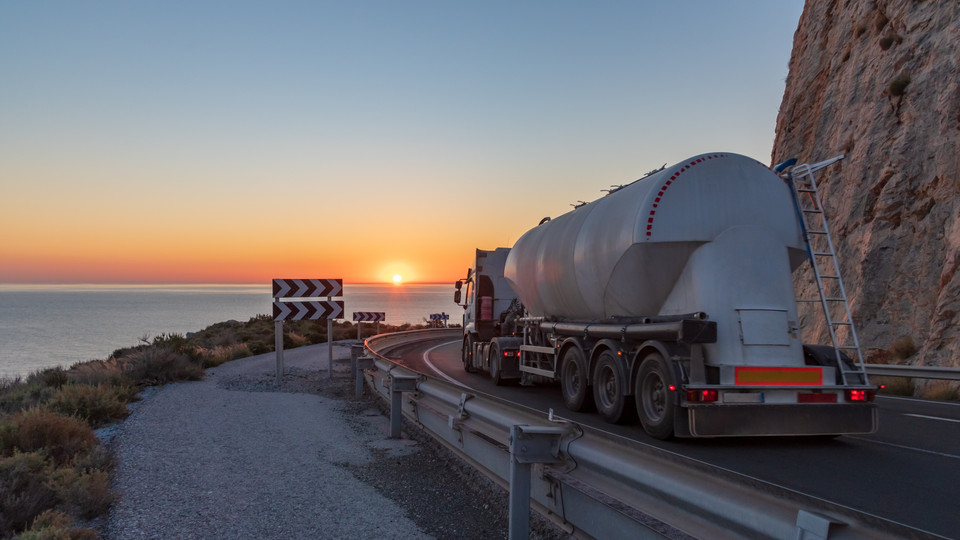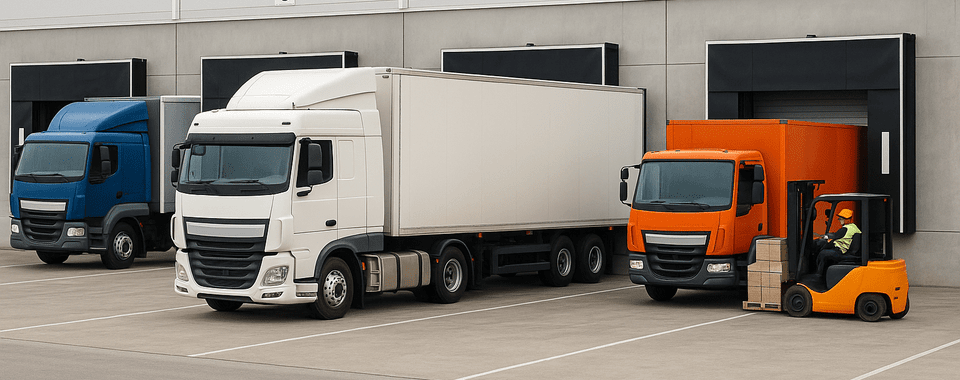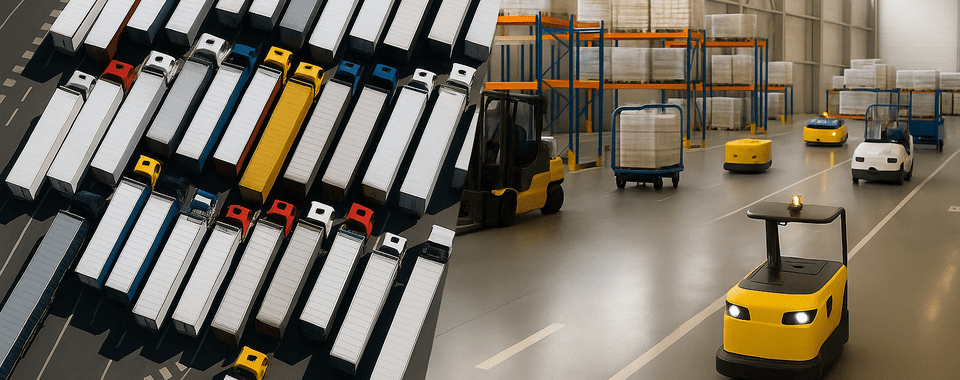If you had to choose a song to describe the cement and concrete industry’s journey toward decarbonization, what would it be?
Given the challenges ahead on the road to net-zero, AC/DC’s Highway to Hell might seem like an obvious choice. But with the latest decarbonization tools and AI technologies available, What a Wonderful World by Louis Armstrong starts to feel like a fitting anthem. However, if we fail to use these innovations effectively, we could find ourselves on a Wonderful Highway to Hell.
Here’s how advanced logistics can help.
Highway to Hell: Why Logistics Must Join the Decarbonization Journey
A typical cement kiln emits between 550 and 850 kilograms of CO₂ per tonne of cement, depending on factors such as technology, age, geographic location, and prevailing market conditions. However, this figure doesn't capture the full environmental impact. Transport emissions also play a significant role.
A 28 t silo tanker completing a round trip of 600 km will add another 550-600 kg of CO2 per tonne of cement to that total from diesel emissions. This is not just the case for cement - the same is also true for concrete, aggregates, bricks. It is easy to forget about logistics emissions, but they represent a key path to cement sector decarbonization.
Electric Avenue: the Road to Zero-Emission Trucking
When considering the path to net-zero emissions in logistics, electric vehicles (EVs) are often the first solution that comes to mind. However, trucks may also be powered by a range of alternative fuels, including hydrogen (via fuel cells or internal combustion engines), liquefied natural gas (LNG), compressed natural gas (CNG), e-fuels, and biodiesel. While many of these technologies are still emerging, all offer lower CO₂ emissions compared to traditional diesel, with EVs leading the way in commercial deployment across Europe, the Americas, and Australia.
If powered using renewable energy, these have the potential to even reach net zero CO2 emissions during operation. The first news stories about EVs in the cement and concrete sectors appeared in 2022, with a significant uptick in 2023. In 2024, we saw some major announcements, including Cemex committing to integrating 1000 EV trucks into its global fleet by 2030. Governments are also in the driver’s seat, with all new trucks sold in California to be net-zero by 2045... assuming that the current US Administration does not do a U-turn.
Over the Hills And Far Away: Tackling The EV Truck Challenge
Transitioning from fossil fuel trucks to electric vehicles (EVs) presents several challenges, with range anxiety often topping the list. Unlike diesel vehicles, EVs require time-consuming charging at designated stations, many of which require advance booking, particularly for larger commercial trucks.
However, recent advancements offer reason for optimism. Today’s heavy-duty EVs can achieve 500–600 km of range with a combination of midday top-up charging and a full overnight recharge at base. That said, route planning must take geography into account. EVs are more sensitive to elevation changes than their diesel counterparts, meaning a steady drive across flat terrain, like the Great Plains, is significantly more efficient than traversing mountainous regions such as the Alps.
Weather also impacts performance: cold temperatures drain batteries faster than warm conditions, influencing both charging station placement and dispatch logistics.
People can be so obsessed with EV range that they sometimes don’t realize that they are efficient, typically consuming just 1kW/km. Diesel-powered trucks use around 300ml/km, which translates to 3.2kW/km. This means that EVs are far more efficient, even if they are being charged with a mixture of renewable and fossil-generated power.
If I Had A Hammer: Why Legacy Tools Can’t Keep Up
Integrating EV trucks into a diesel fleet significantly increases the complexity of dispatch planning. This is due to the added operational variables, such as range limitations, charging requirements, and differing performance characteristics, that must be factored into already intricate scheduling models.
Consider a hypothetical cement producer with 60 trucks and 60 delivery orders. The number of possible transport plans is 60 factorial, which equals approximately 8 × 10⁸¹, an unimaginably large figure. This level of complexity is far beyond the capacity of human intuition or manual planning.
This is not the kind of number that human brains are made for. It is simply not possible to find the one combination of instructions that offers the lowest transport cost, the lowest emissions and best time performance among so many options.
So what tools can help? Pen and paper have long since climbed the stairway to heaven. Excel offers a slight improvement, but is best left in the 1990s. One step further is dispatch software with built-in intelligence, although this too is now outdated.
Simply the Best: How AI Is Transforming Transport Planning
Optimal results in dispatch planning are achieved through AI-powered software solutions. INFORM’s system features a centralized transport planning platform that seamlessly integrates with existing Enterprise Resource Planning (ERP) systems, granting direct access to the current order book.
Leveraging geodata, the system accurately calculates shortest routes and estimated trip durations for customer deliveries. With just a single click, it can generate a fully optimized transport plan for the upcoming shift - within seconds. This enables logistics teams to respond swiftly, efficiently, and intelligently to dynamic operational demands.
Once the next shift starts, the software switches to real-time mode to incorporate status updates from the trucks’ telematics systems, as well as changes to orders from the ERP system. Based on this information, the software recalculates an optimized plan every minute. This is where the magic of the system lies and is where the final hard-to-achieve 5-10% of savings are derived from.
Money for Nothing: How AI Turns EV Costs into Profits
Early indications show that EVs are 5-10% more expensive than diesel in terms of operating costs. However, by ensuring that EVs are fully-integrated into an optimized process, companies can offset these costs to a great extent.
Using INFORM’s software, clients are typically able to reduce their empty mileage by 19%, increase their loads per day by 37% and reduce their logistics costs by 20%.
By incorporating our software, a ready-mix concrete producer was able to increase its daily truck productivity from 24.1 m³ to 30 m³. Over a year this is a rise from 5,900 m³ to 7,350 m³ per truck. Multiplied across a fleet, they were able to reduce their transport costs from €9.6 m to €7.4 m, a saving of €2.2 m. This is money that can be invested in other decarbonisation measures, including switching the fleet to EVs. In this case, the ready-mix concrete client was able to reduce the number of trucks in its fleet by 21%.
In general, productivity is dramatically improved in most cases, with users typically reporting a return on investment within 12-15 months. The benefits of the system are noticeable with more than 50 trucks, but really begin to make themselves felt at larger fleet sizes. This is where cement and ready-mix companies become the king of the road.








